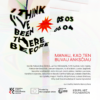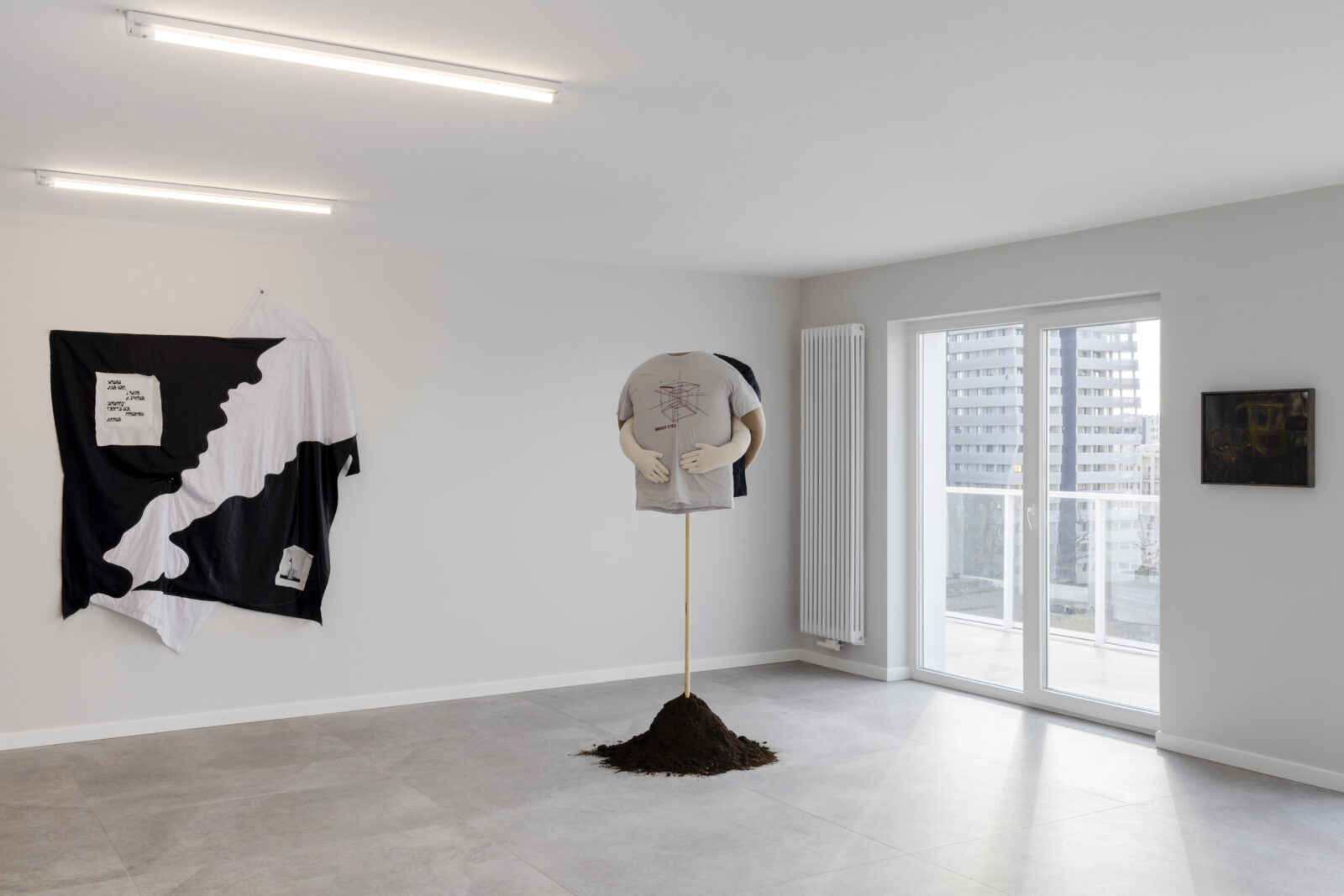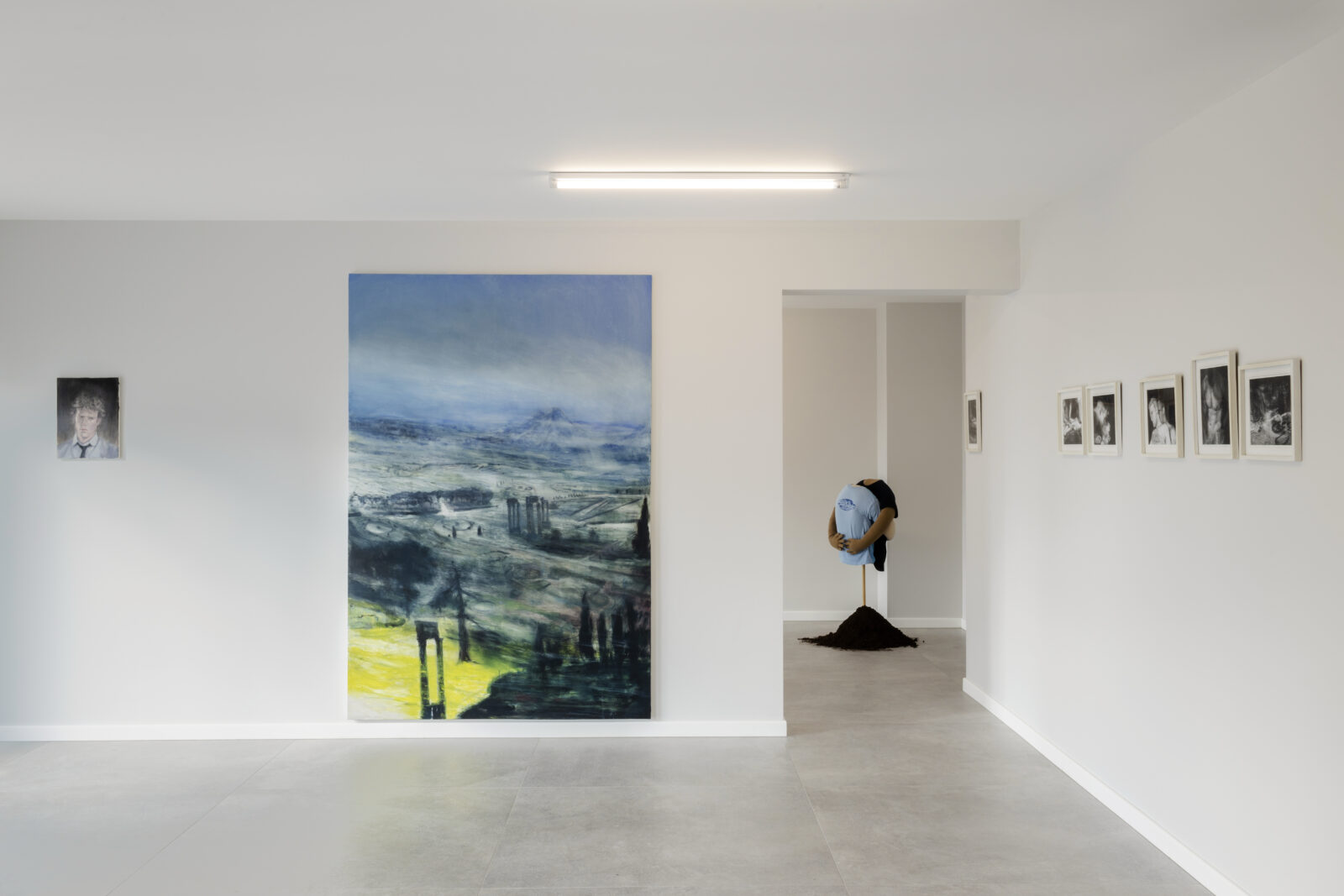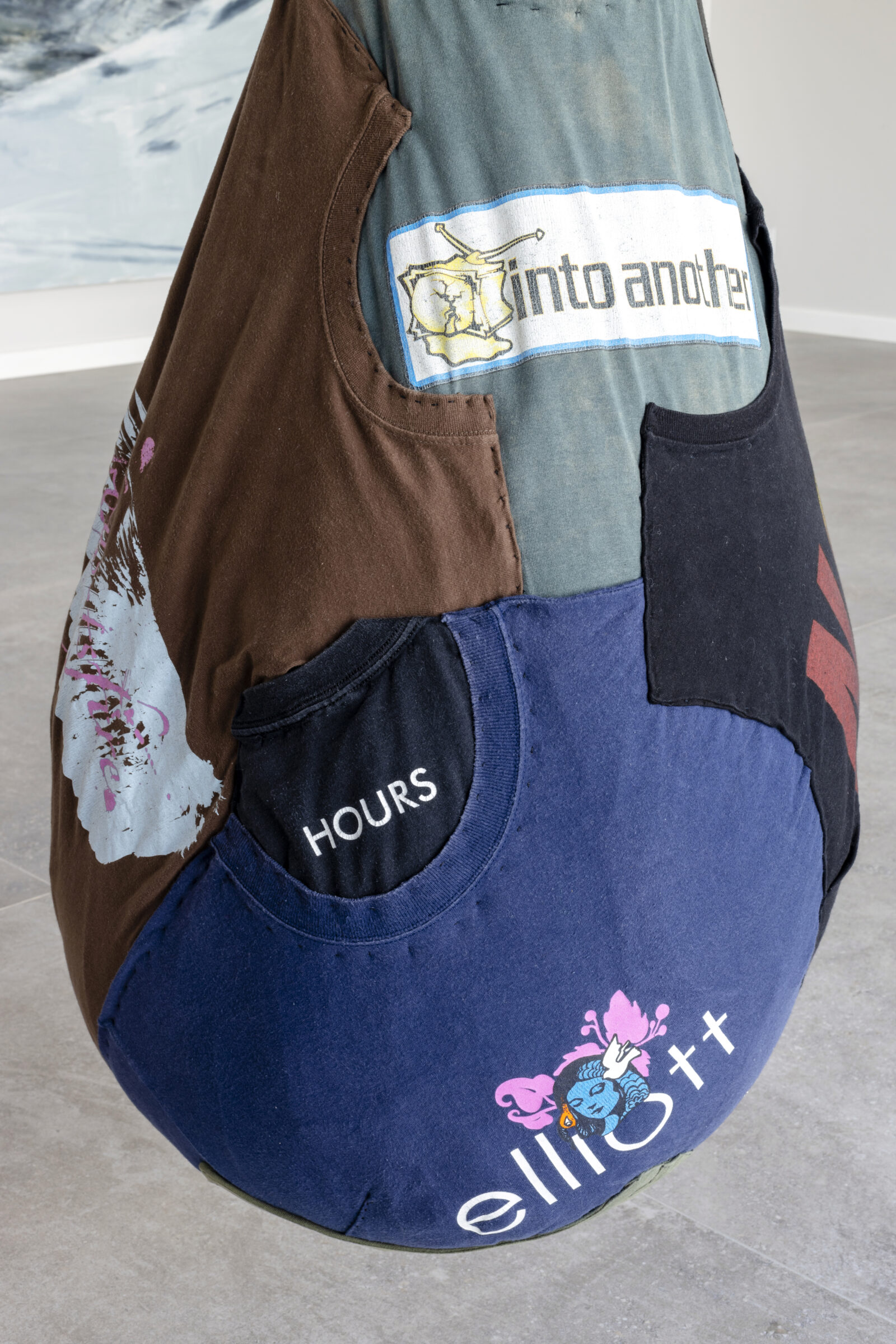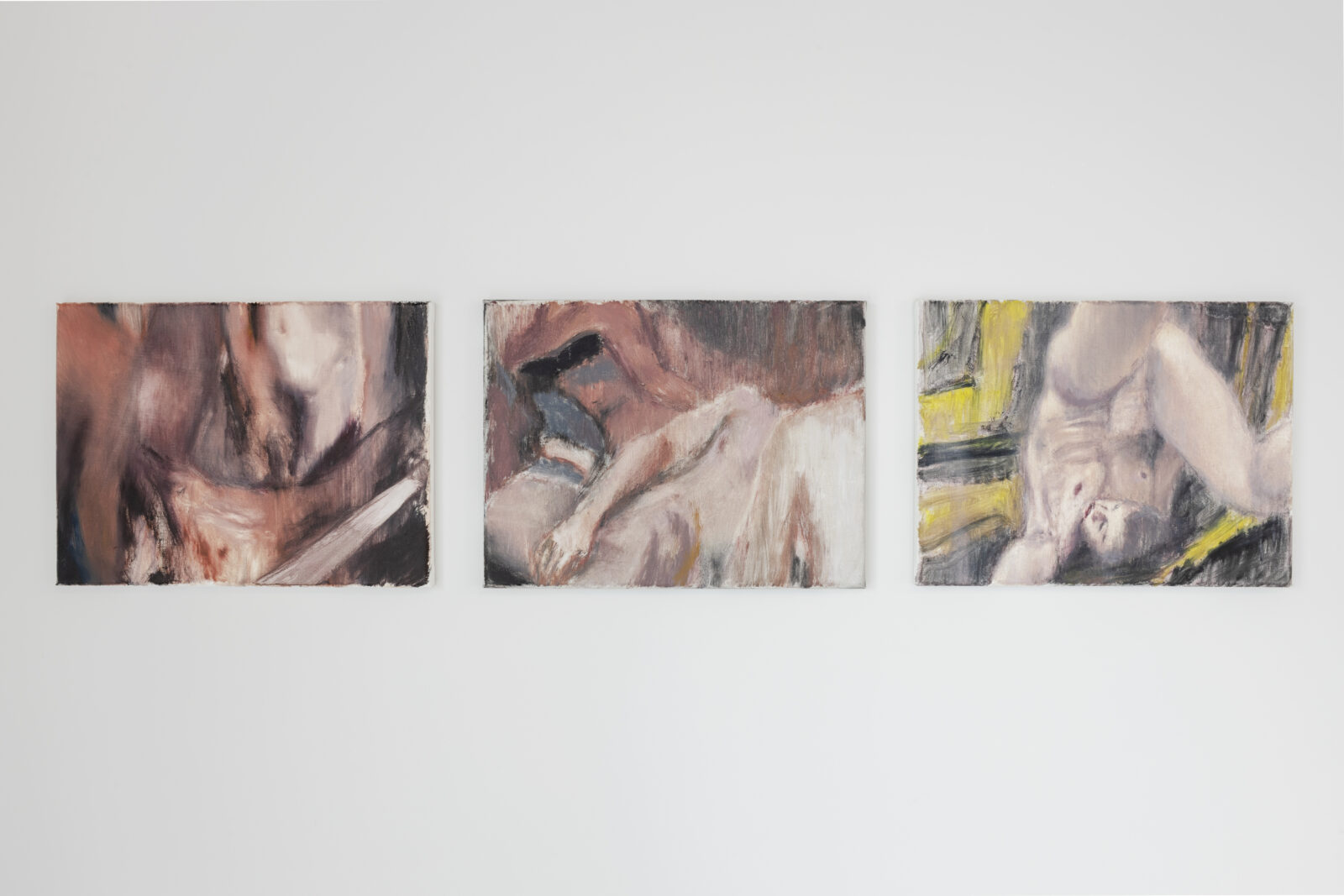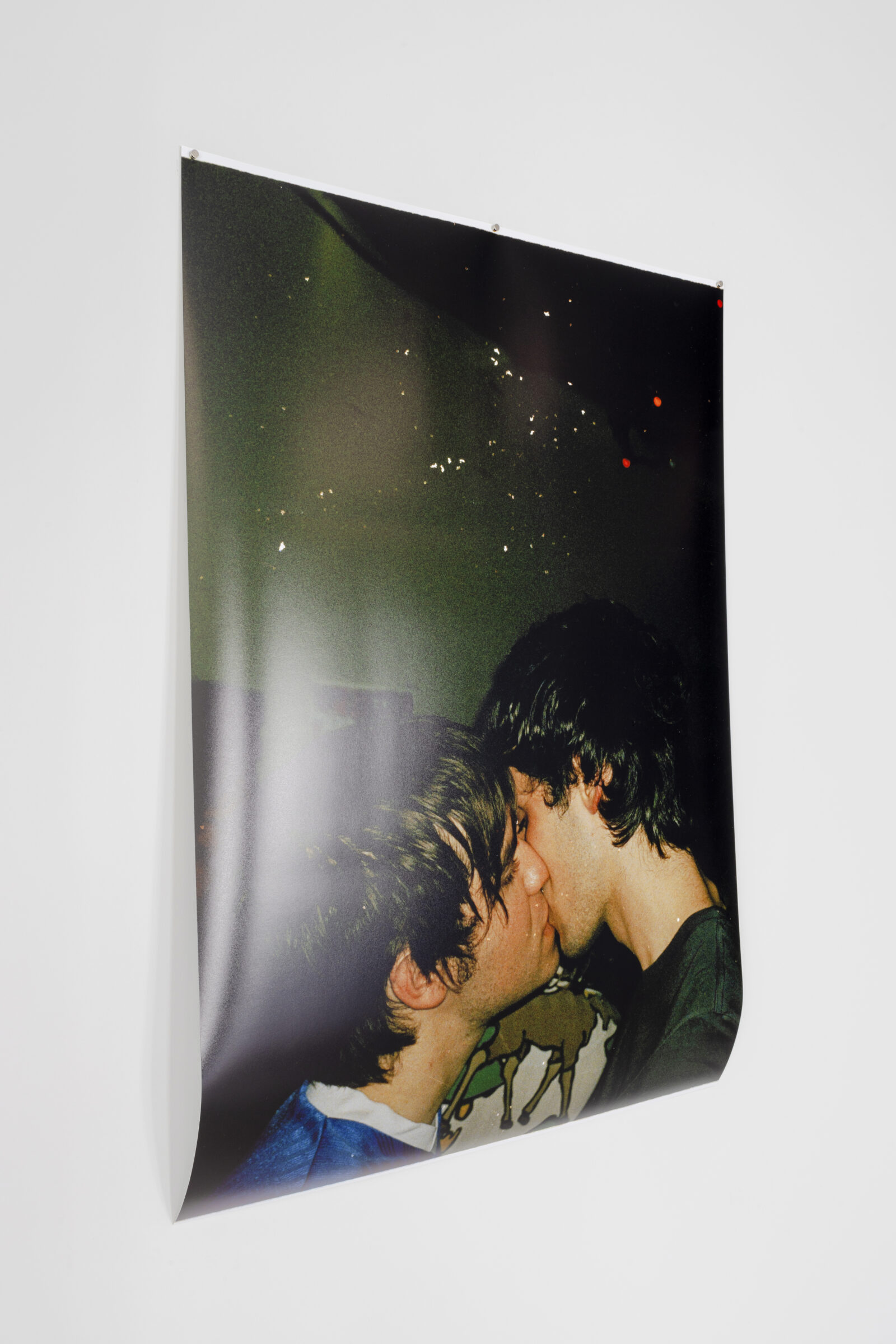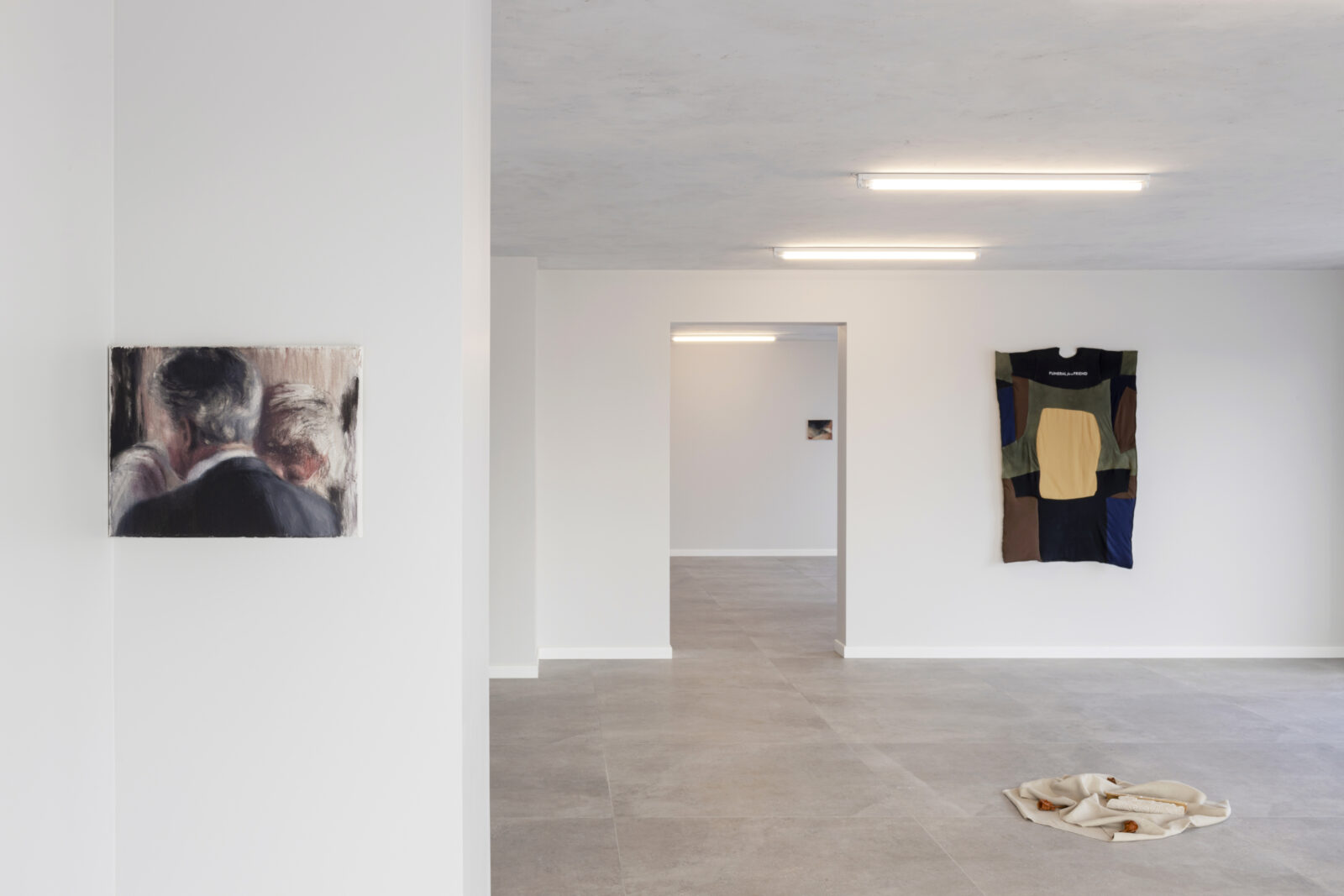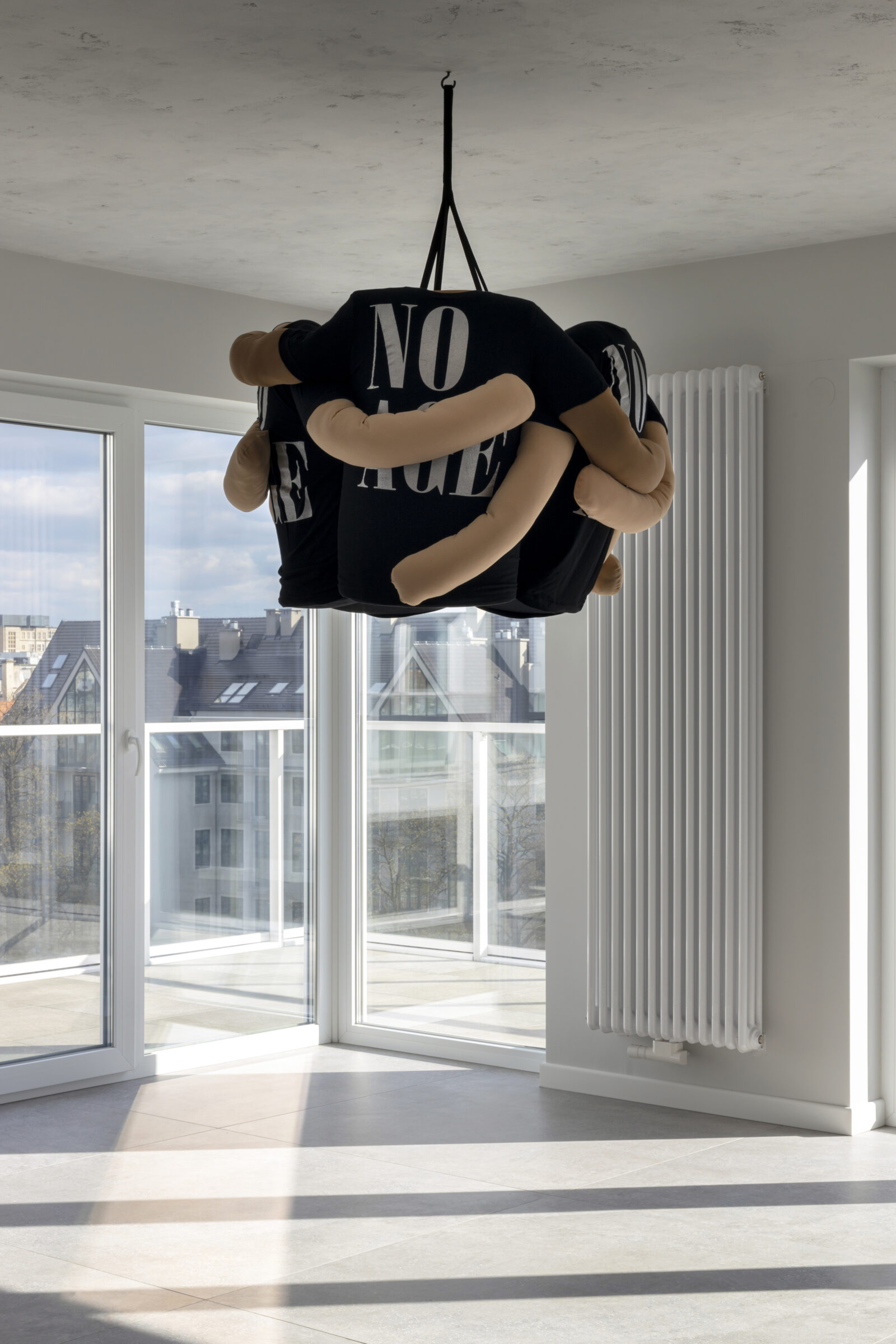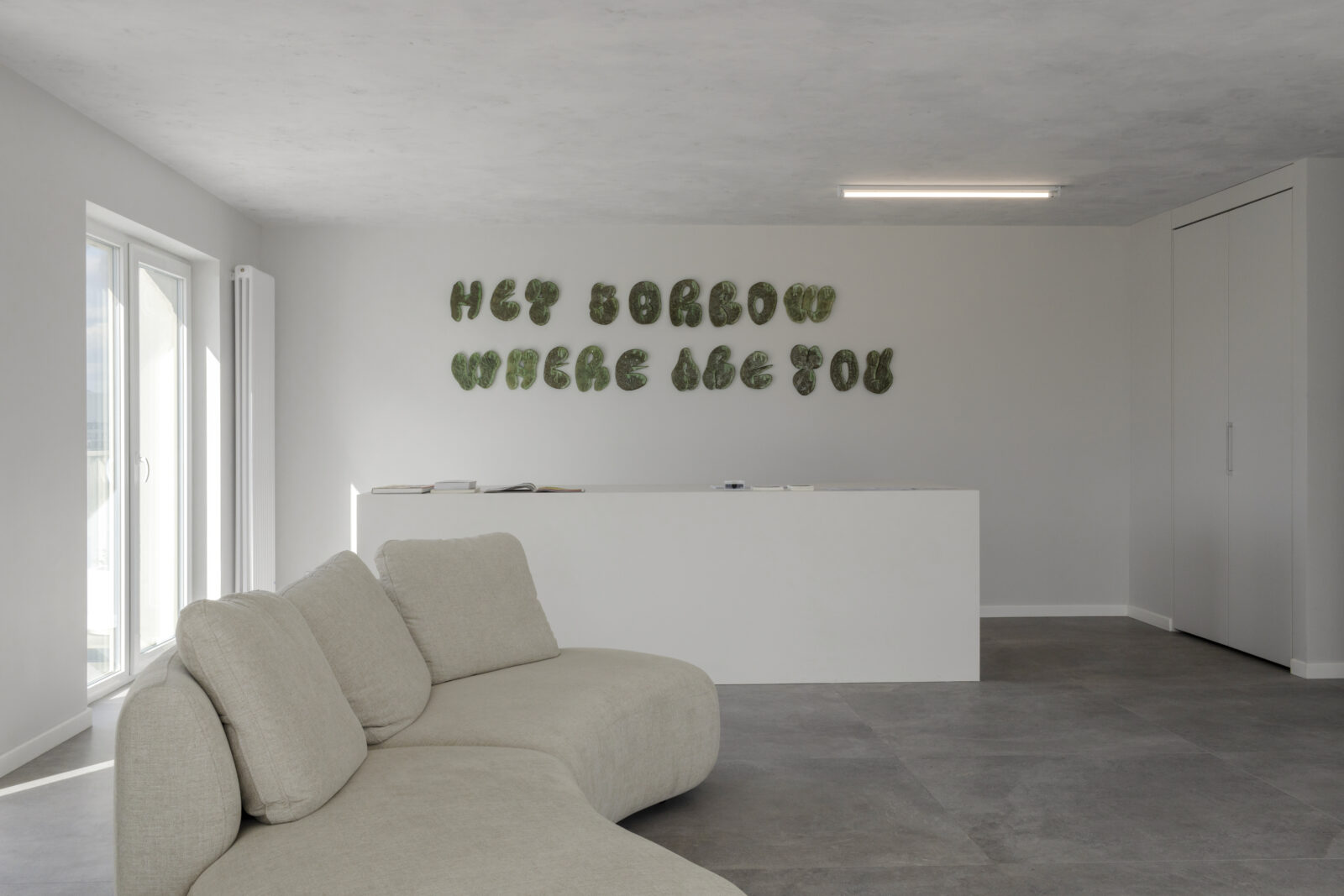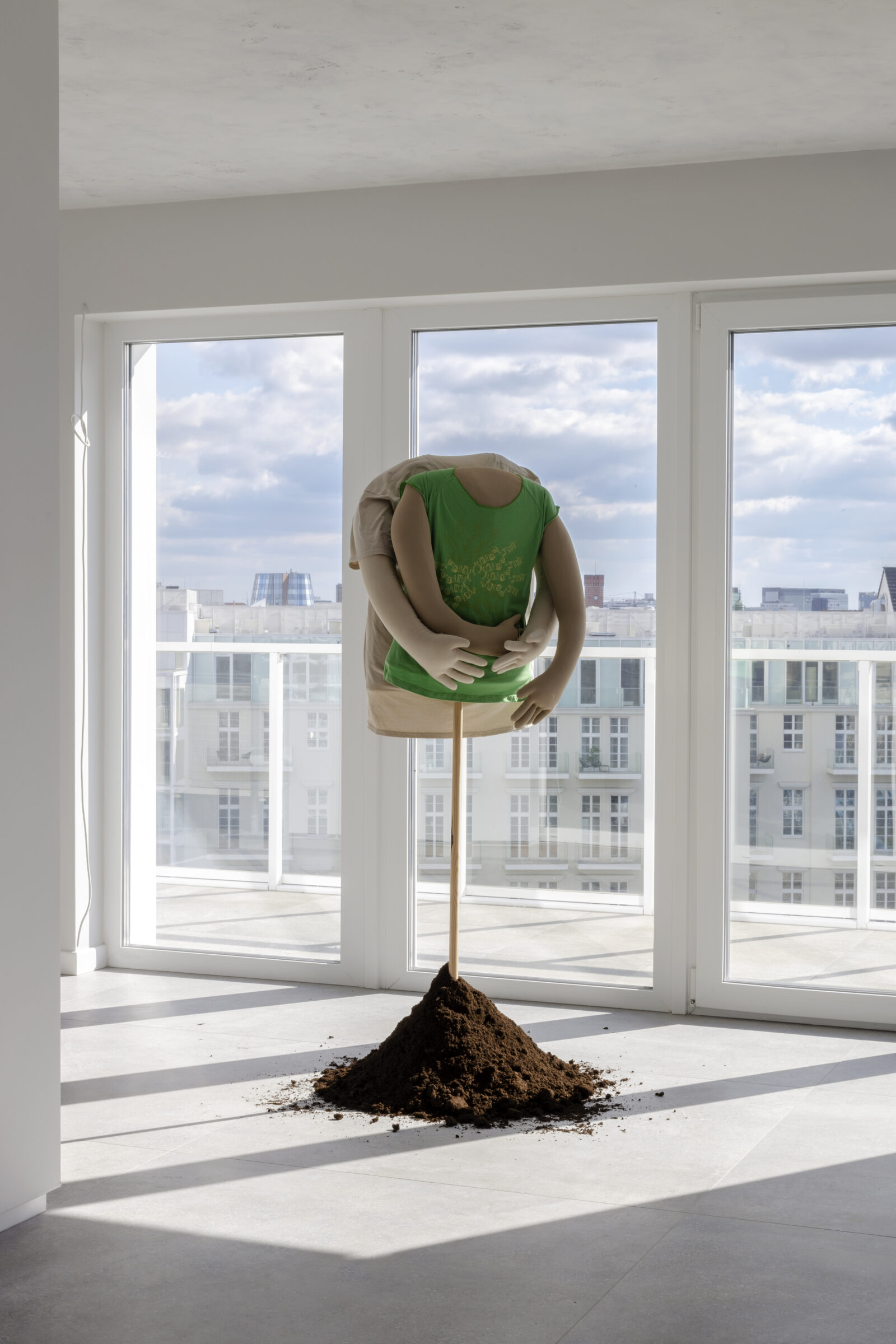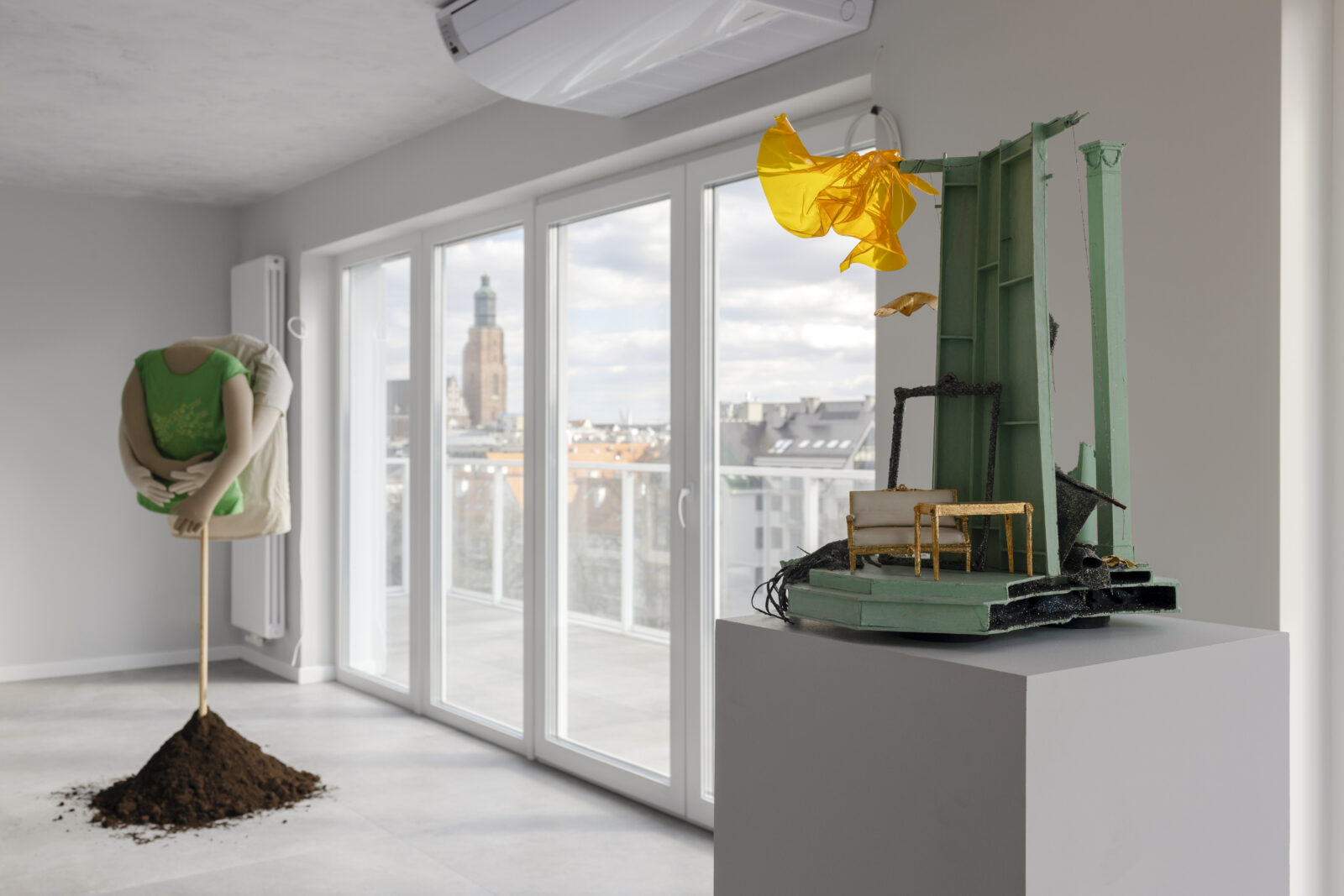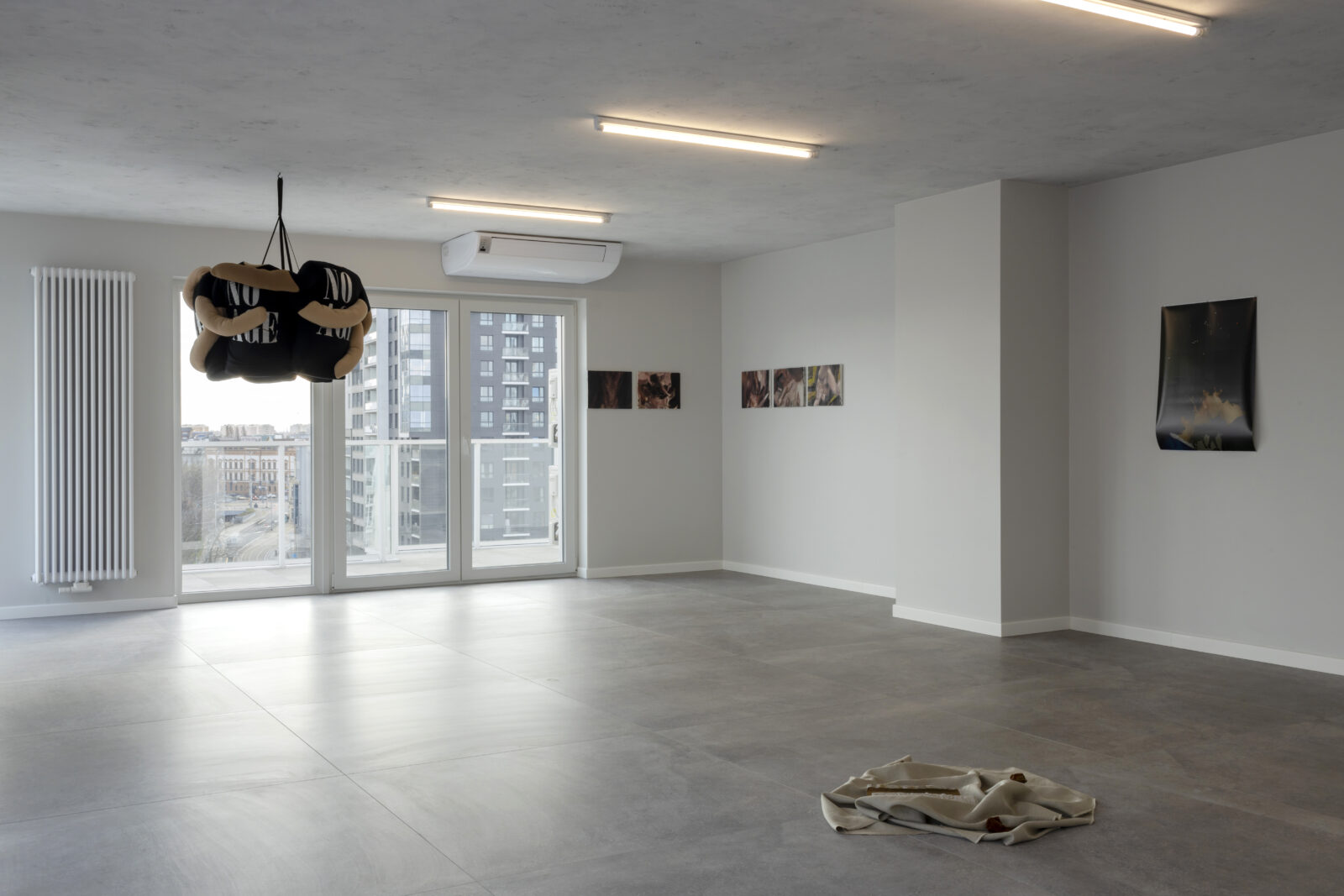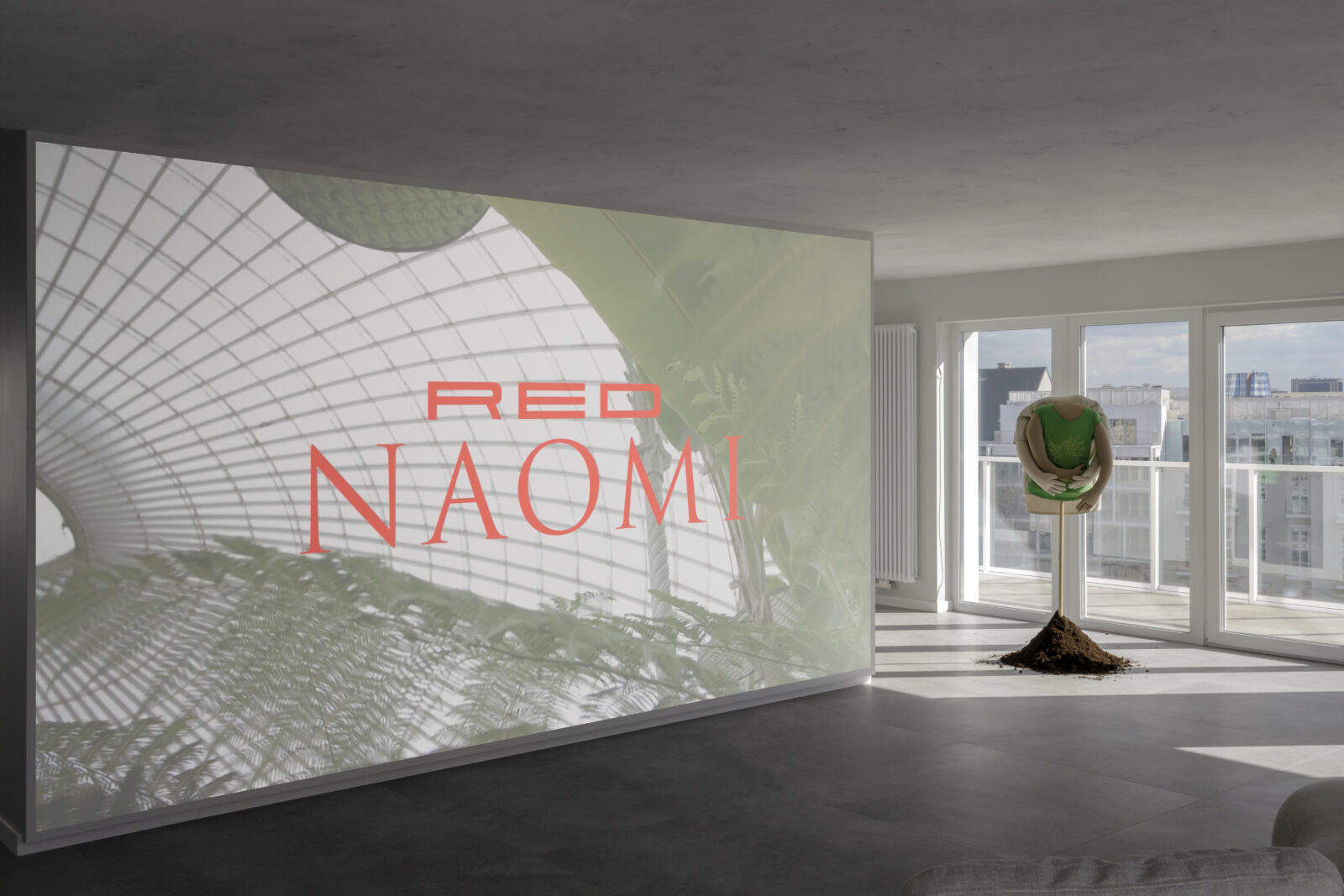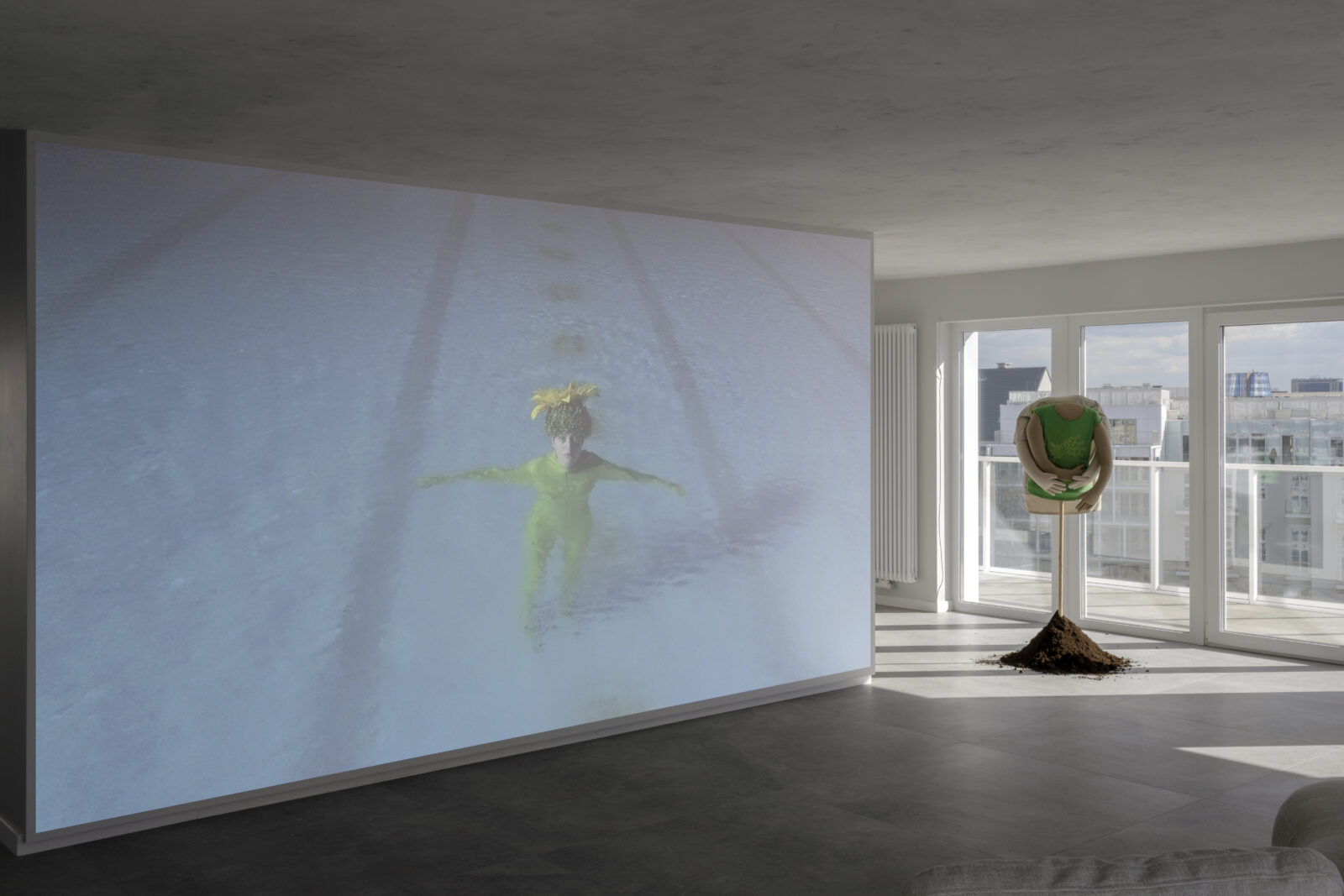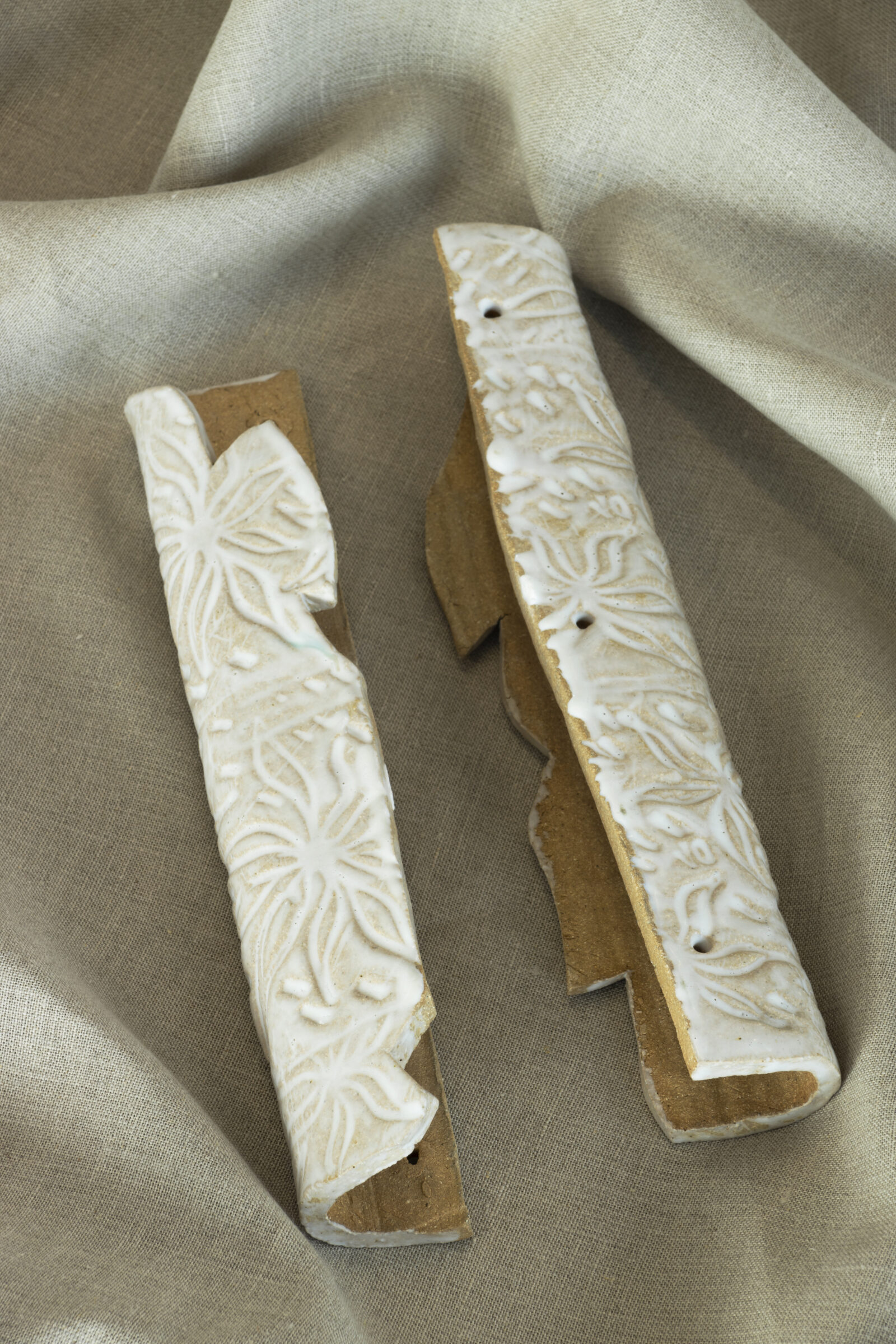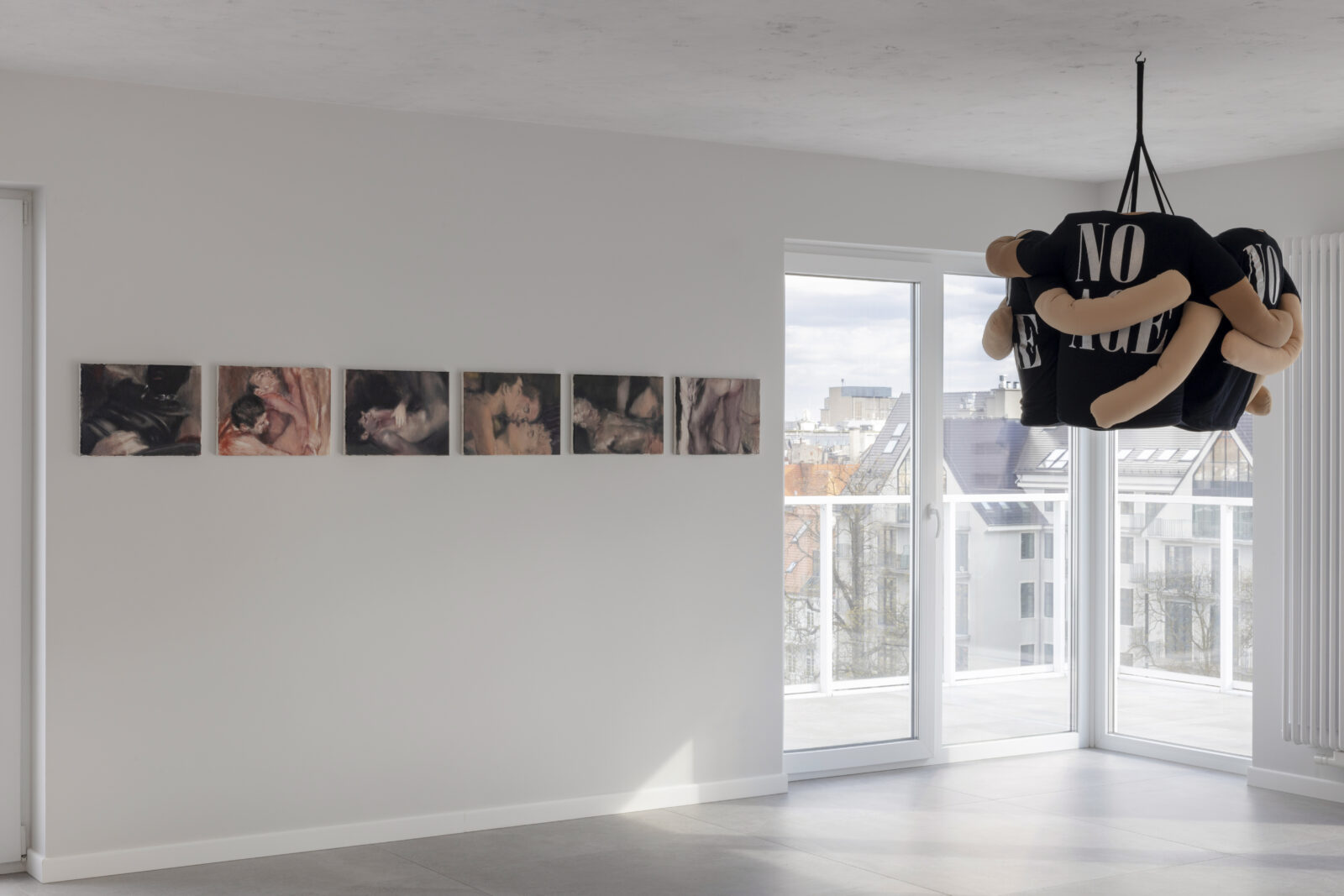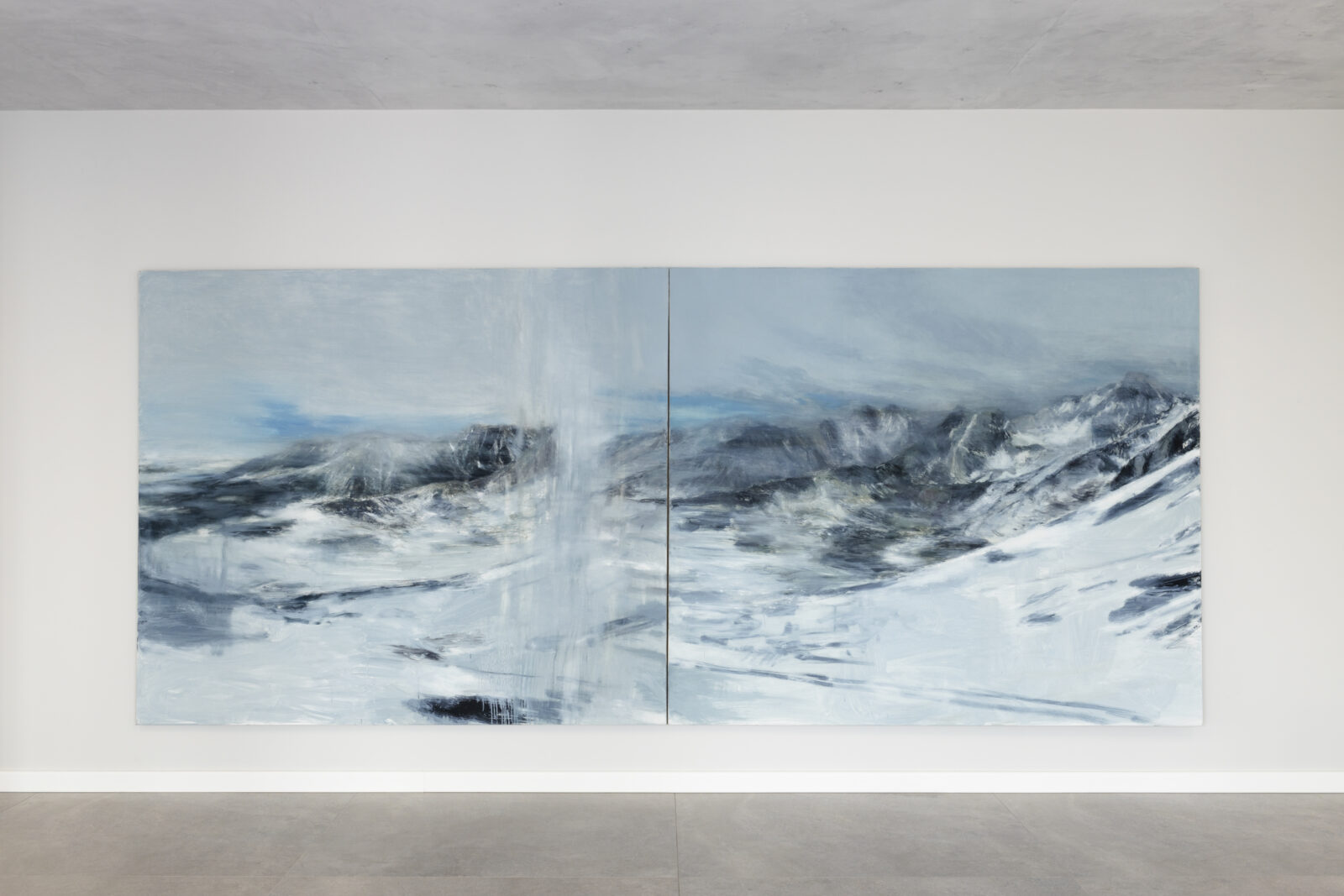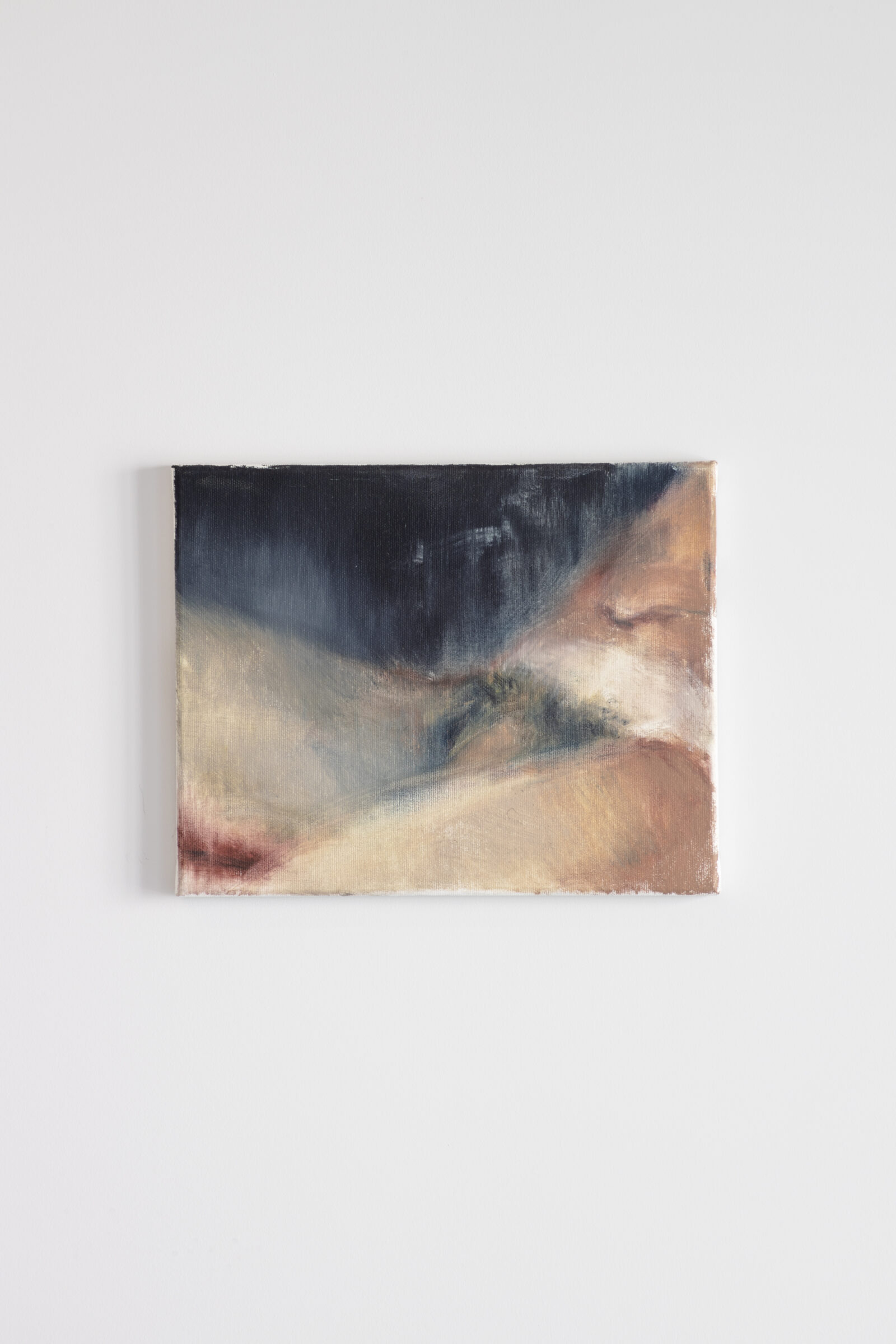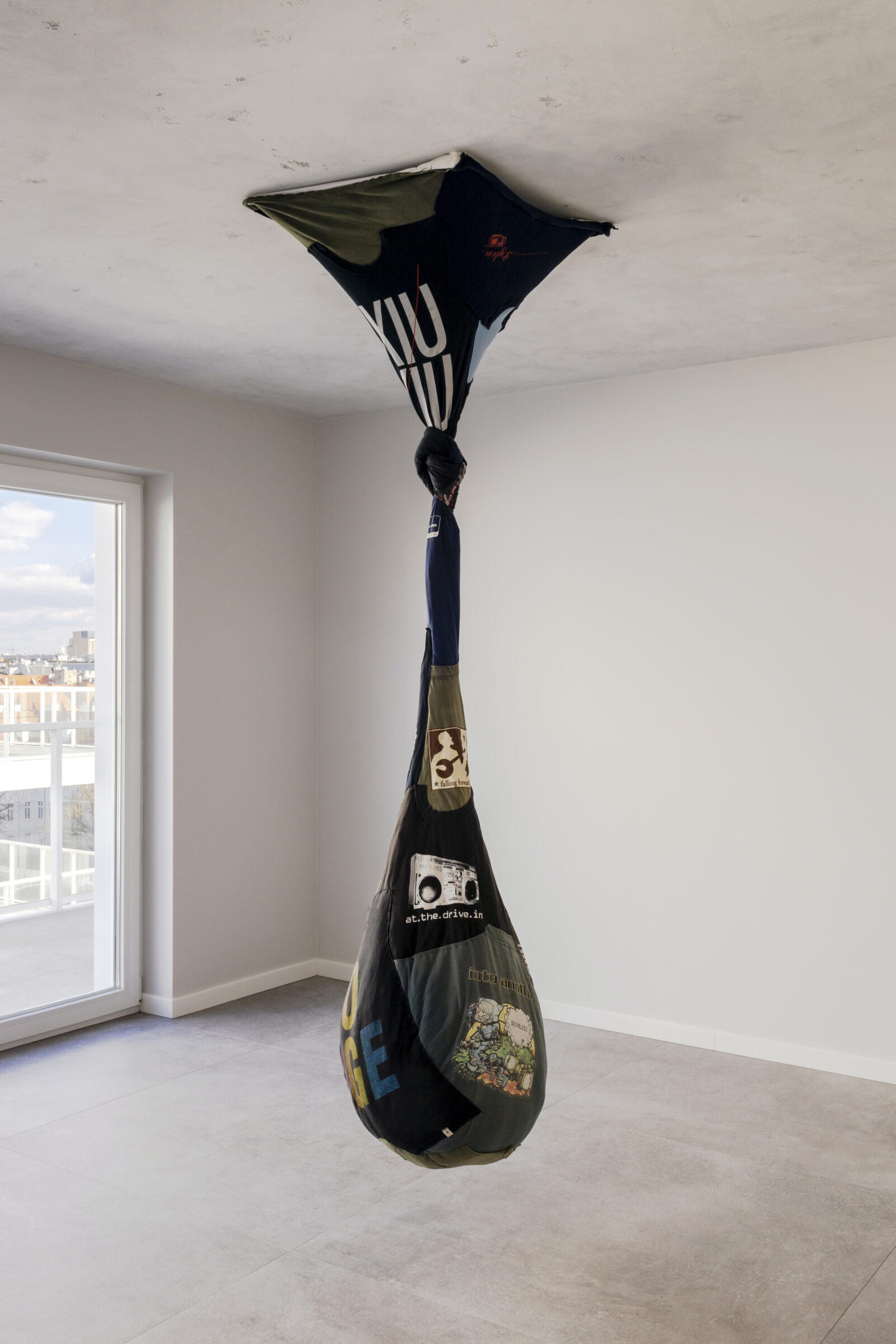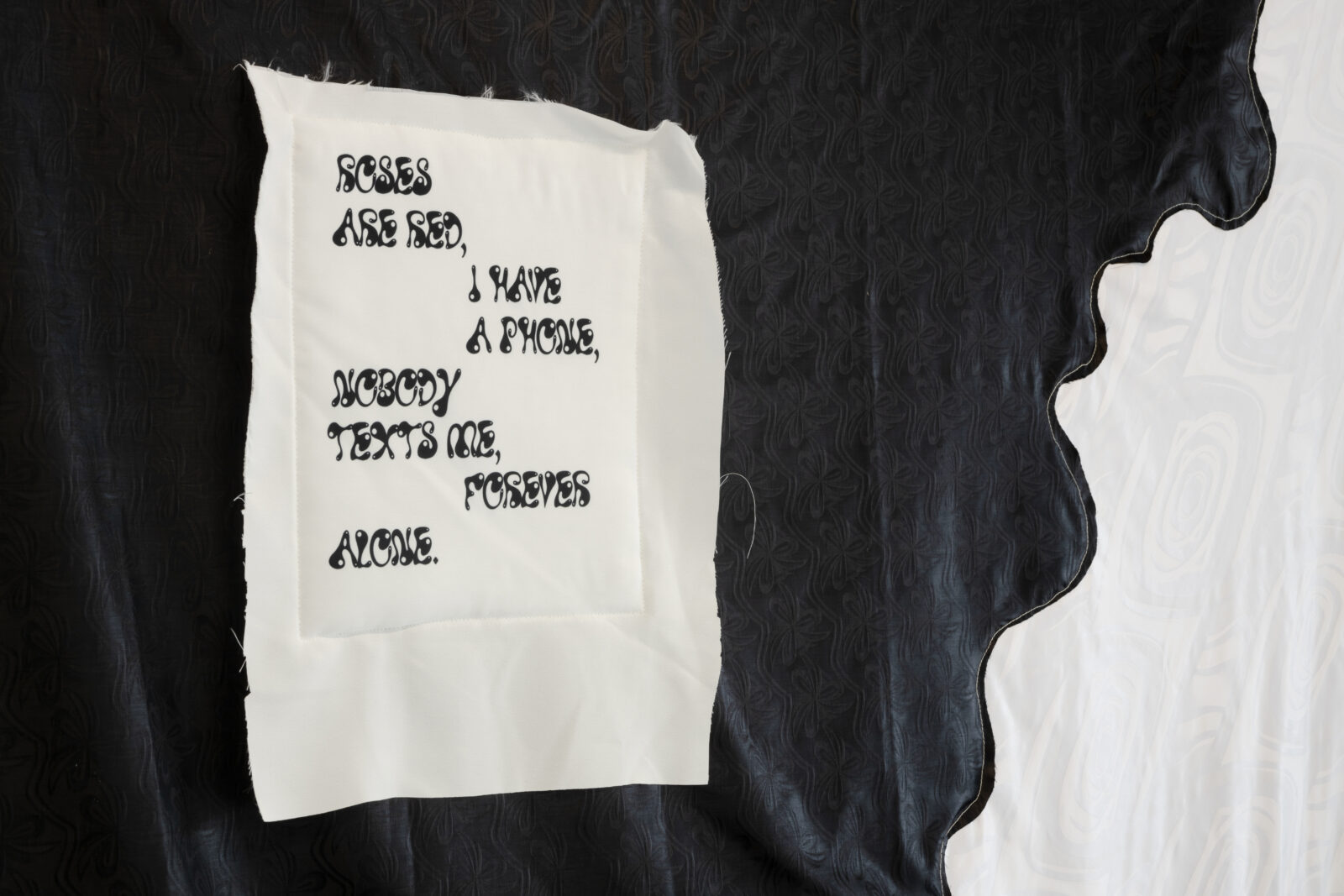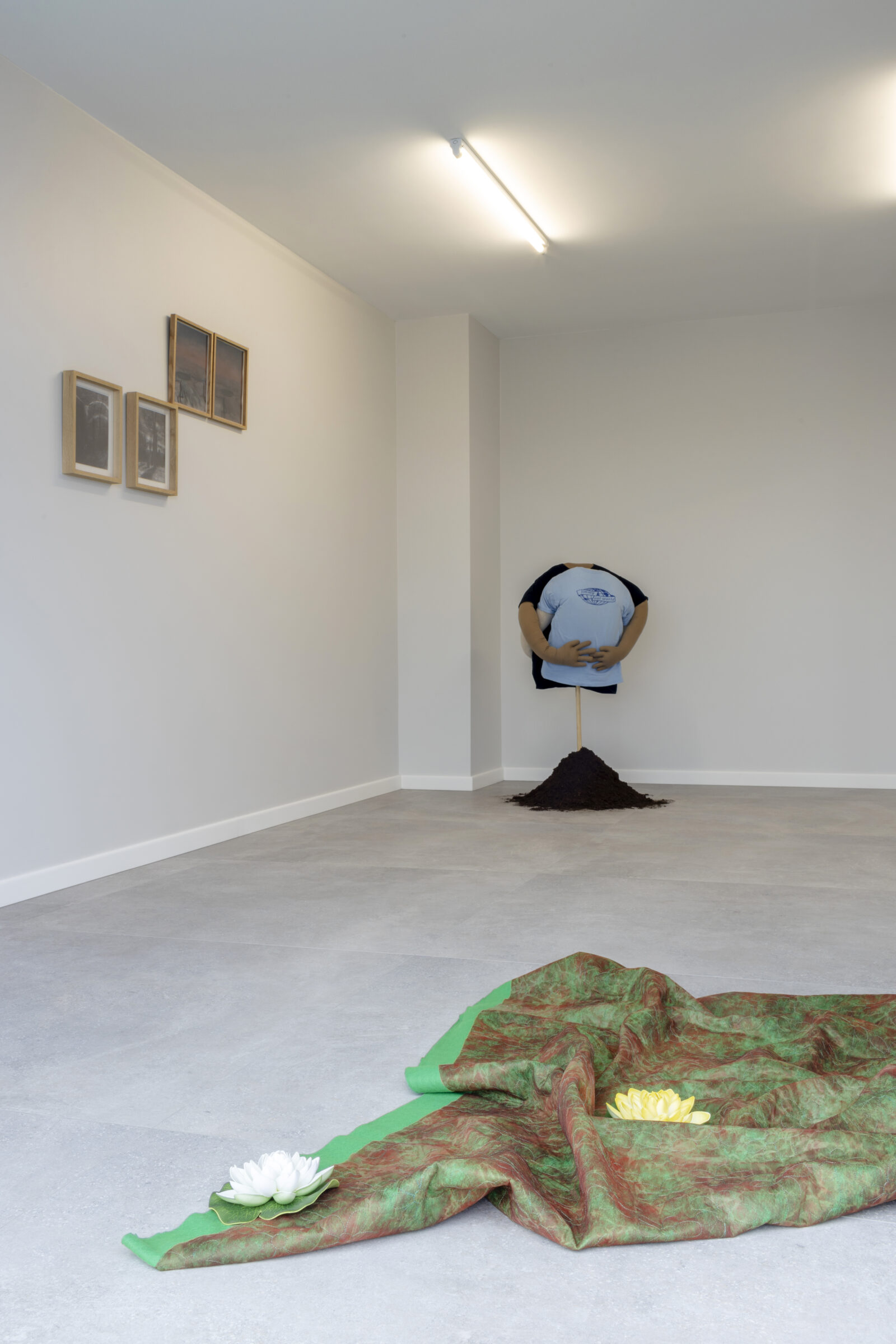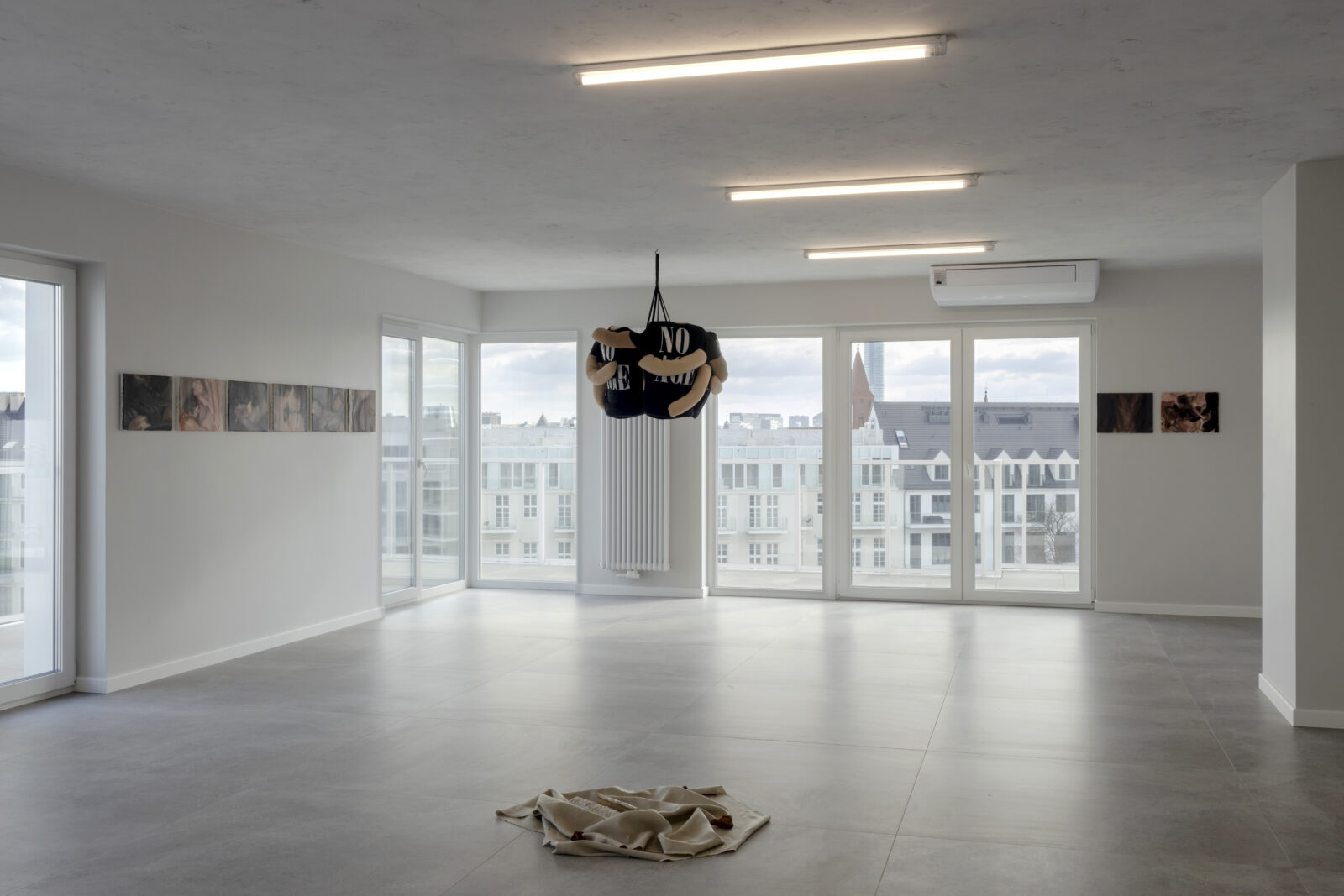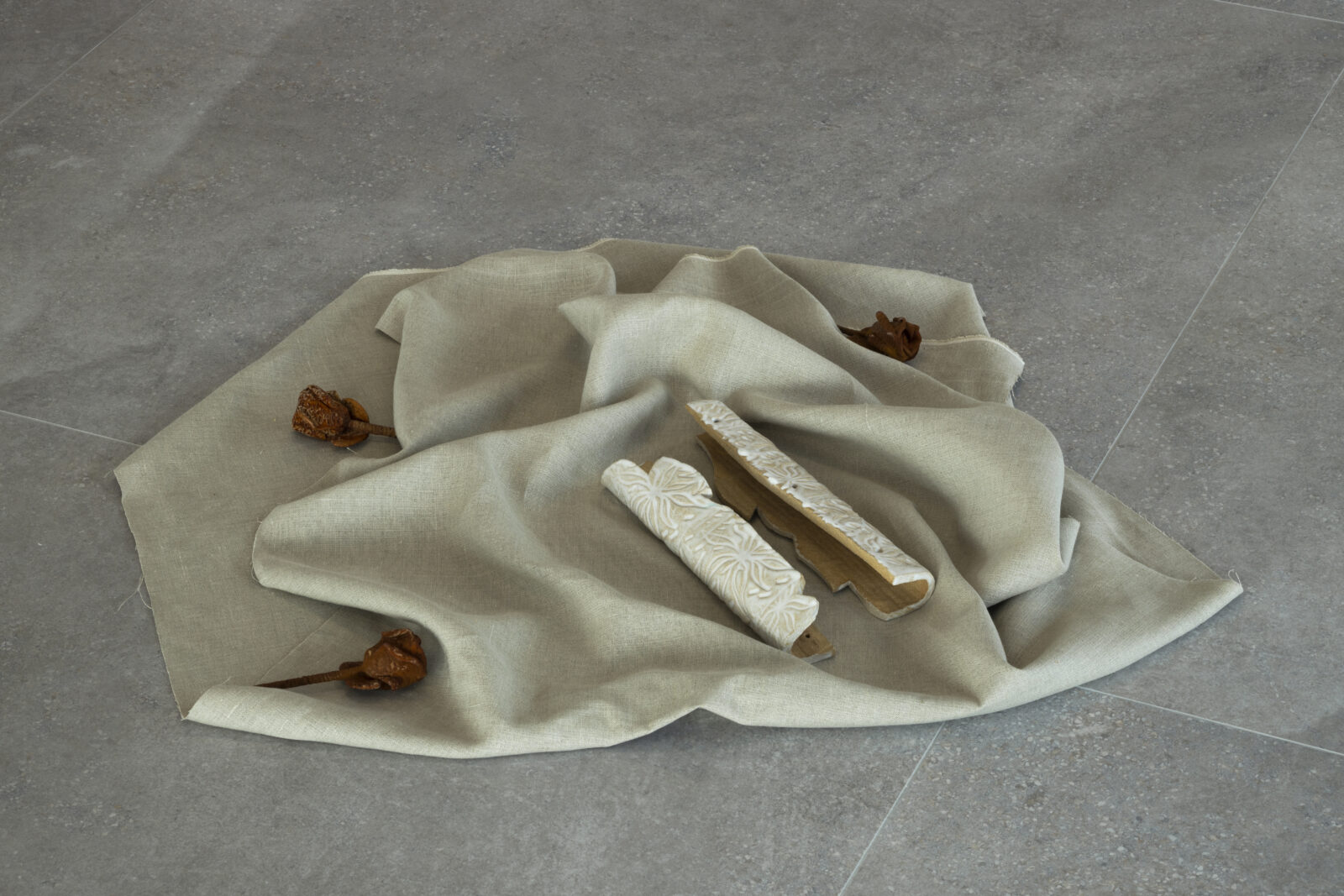Mmmelting
Melting comes with the end of winter – it can prevent the frost from killing the young plants and bring collective support to no longer be afraid of the future. As we melt, we become immersed in collective sadness.
In spite of using different visual languages, what unites Łukasz Stokłosa and Radek Brousil is their exploration of sensitivity and a similar approach to key social, cultural and environmental issues. The artists take a critical stance towards attitudes such as the stigmatisation of LGBTQ people, racism, and unsustainable industries.
The exhibition is a melancholic tale of exclusion, collective trauma, loss, and that which remains. Mmmelting is about transience, intimacy, the body, vulnerability, mourning, but it is also a harbinger of relief in an unbearable situation and a tribute to youth.
The story revolves around different timelines, blurring the boundaries between the living, the inanimate, and the artificial. The exhibition abounds in nostalgic references to the mass culture of the 1990s, which is when the two artists were growing up. Stokłosa draws mainly on cinematography and TV series, picking up on quirky themes and marginal characters. Brousil, on the other hand, focuses on the atmosphere of the era, its characteristic colours, and music – as demonstrated by his textile installations from t-shirts with names of the bands that were close to him (such as NO AGE).
Łukasz Stokłosa explores the boundaries of truthfulness through painting, which, as he says, has grown into his body. He looks through an emotional filter to pay attention to the elusive dissonances that make us uncertain of what we see. The featured works by Stokłosa include a continuation of a series of paintings drawing on the homoerotic pornographic films of the 1980s. Given the context of the AIDS crisis at that time, they, therefore, commemorate figures who are no longer alive. Back then, the diagnosis was tantamount to a death sentence – the virus killed the young prematurely, just as an early frost kills budding flowers before they have a chance to bloom. In comparison with the current pandemic, the events from before the breakthrough in HIV research are viewed very differently in the USA. Today, the New York Times chronicles those who died of covid-19, whereas in the AIDS era, the public was indifferent to the number of victims until the 1990s. With regard to the situation in Poland, the stigmatisation of queer communities follows in the footsteps of the path in the USA when the AIDS epidemic broke out. What we see in both cases is an epidemic of exclusion.
While Stokłosa rewrites history by highlighting figures that typically remain in the shadows, Brousil makes an activist statement on an uncertain future, using poetic symbolism and a game of associations. Faced with unresolved social and environmental problems, the artist offers seemingly banal yet thoughtful and poignant solutions. The slogans he smuggles into his photographs, sculptures, and objects smack of the bitterness of misunderstanding. They are mostly excerpts from the lyrics of indie-emo bands, which to a large extent determine the titles of his works or their contents, as in the case of the ceramic hey sorrow, where are you? In his most recent work, Brousil draws inspiration from his observation of athletes’ gestures of motivating each other, usually just before a game. In this case, however, silhouettes of different skin colours come together to mourn and support each other in their shared grief, creating a safe place for the viewers. Today’s problems caused by the consequences of thoughtless human decisions increase the vulnerability to be hurt, against which Brousil’s works do not seem to guard us at all. Instead, they offer understanding, empathy, and intimacy. They create a safe refuge.
The dialogue emerging between the two artists shatters heteronormative patterns, embracing uncertainty, fantasy, and empathy. The two perspectives of exclusion meet on the surface of intimacy, vulnerability, and mutual support, which, like the melting ice, brings a ray of hope.
curator: Natalia Barczyńska
***
Radek Brousil is a Czech artist who makes installations, working predominantly with textiles, alongside ceramics, film, photography, and video. His theme addresses social testimony, presenting an activist expression of an uncertain future. Brousil defines social, cultural, and environmental problems using unexpected interpretations and terminology, and chooses instead to look at these issues on a symbolic, personal, and emotional level. His interest focuses on post-colonial tendencies in contemporary artistic discourse, for example, his investigation into the issue of the origin and distribution of flowers or textiles. Through his work with textiles, Brousil emphasises their Czech origin and African destiny, enabling him to highlight the problems of the market economy and its power structures. Radek Brousil graduated from the Studio of Photography at the Academy of Arts, Architecture, and Design in Prague. In 2015 he received the Oscar Čepan Award for Young Visual Artists. His works are included in local and international private and institutional collections.
Łukasz Stokłosa does figurative painting, often inspired by mass culture, films, and series. He feels comfortable with the aesthetics of kitsch. Traveling and visiting historic buildings and landmarks is the source of motifs that he later subjects to transformations. He often uses the somewhat archaic strategy of homoerotic camouflage, which he nevertheless finds interesting; he also draws on the aesthetics of camp. By juxtaposing distant and foreign elements in his practice, he compiles a peculiar cabinet of curiosities. This way of constructing the narrative is especially noticeable in his sculptures-objects. His interests revolve around contemporary interpretations of history and past events. What often characterises his paintings are homoerotic images inspired by gay pornography. Stokłosa’s paintings are sensual and intelligent, appealing and repelling at the same time; there is often more to them than meets the eye, just like in the case of film noir.

